How to Set Up a Smart Garden with Tech Gadgets

Content
Everyone dreams of a beautiful living space, and a garden plays an essential role in creating that ideal environment. Beyond aesthetics, gardens contribute significantly to our well-being and the environment. Did you know that green spaces in urban areas help purify the air we breathe and reduce stress levels? Studies reveal that access to greenery improves mental health and boosts overall happiness. Moreover, well-maintained gardens can increase property values substantially, making them not just a luxury but a smart investment. As we look to enhance our outdoor spaces, incorporating technology into garden management has become increasingly popular.Smart gardening gadgets, such as automated irrigation systems and soil sensors, are revolutionizing how we care for our plants. These devices ensure plants receive the right amount of water and nutrients precisely when needed, promoting healthier growth and conserving resources. Imagine a garden where you can remotely monitor soil moisture levels or schedule watering times from your smartphone—these innovations not only simplify maintenance but also empower gardeners to achieve optimal results with minimal effort. So, Gardens provide us with a sanctuary from the hustle and bustle, a place where we can reconnect with nature and unwind.
For instance, automated lawn mowers offer precision cutting without noise or emissions, while smart planters equipped with automated lighting and nutrient delivery systems ensure plants thrive year-round. These innovations not only save time and effort but also contribute to sustainable practices by optimizing resource use. Thus, a smart garden integrates technology into traditional gardening practices, leveraging automation, data analytics, and smart devices to optimize plant growth and maintenance. This blog will guide you through the process of setting up a smart garden, covering essential gadgets and their benefits.
Planning Your Smart Garden

Assessing Garden Size and LayoutPlanning your smart garden begins with assessing the size and layout of your gardening space. Whether you have a backyard plot, balcony, or indoor setup, each location offers unique opportunities and challenges. A backyard garden allows for a larger variety of plants and potential expansion, typically around 100 square feet, ideal for diverse vegetable and herb cultivation. Balcony gardens, ranging from 10 to 50 square feet, require space-efficient strategies like vertical gardening to maximize planting areas.
Considering Environmental FactorsSunlight exposure and accessibility are critical when choosing the location for your smart garden. Most vegetables and herbs need at least 6 hours of direct sunlight daily. Utilizing sunlight tracking apps helps determine optimal plant placement based on real-time data. For indoor gardens, adjustable LED grow lights simulate natural sunlight, supporting plant growth in low-light conditions. Proximity to water sources and home convenience are also key considerations for garden maintenance.
Plant Selection for Your Smart Garden
Choosing Climate-Adapted PlantsSelecting plants suited to your local climate and garden conditions is crucial for a successful smart garden. For example, tomatoes thrive in warm climates with consistent sunlight, making them ideal for backyard gardens with long growing seasons. Cooler-weather crops like lettuce and spinach prefer partial shade, suitable for balcony gardens or indoor setups.
Integrating Smart Gardening TechnologiesIncorporating smart gadgets enhances plant growth and efficiency. Soil moisture sensors monitor hydration levels, alerting you to water plants as needed, while smart irrigation systems adjust watering schedules based on real-time weather forecasts. These technologies promote water conservation and optimal plant health, minimizing water waste and supporting sustainable gardening practices.
Utilizing Companion Planting StrategiesCompanion planting enhances plant growth and natural pest control. Pairing plants like marigolds with tomatoes deters pests such as aphids and nematodes, reducing reliance on chemical pesticides. Understanding these plant relationships fosters a balanced ecosystem within your smart garden, promoting healthier plants and maximizing yield. By carefully assessing your garden space and selecting appropriate plants while integrating smart technologies, you can create a productive and sustainable smart garden tailored to your specific environment and preferences.
Here is the Top-Rated List of Tech Gadgets for your Smart Garden IN 2024

1 Smart Irrigation Systems
Rachio
Top Picks
Rachio 3 Smart Sprinkler Controller, Rachio 3e
Investment Range
$150 - $280
Rival Brands
Rain Machine, Orbit B-hyve, Skydrop
User Feedback
Generally positive, praised for ease of use, water-saving features, and app integration
Cost Spectrum
Mid to high-end
Core Function
Automates and optimizes irrigation schedules based on weather data and soil conditions.

The Rachio Smart Sprinkler Controller is designed to automate your garden's watering schedule with precision. By integrating with local weather forecasts, the Rachio adjusts watering times to prevent over- or under-watering. It’s compatible with most existing irrigation systems, making it a versatile upgrade for many homeowners. The controller is Wi-Fi enabled, allowing you to manage your watering schedule remotely via a smartphone app. With features like rain and wind skip, the Rachio can save up to 50% on outdoor water usage. The system also provides detailed water usage reports, helping you monitor and optimize water conservation efforts. The Rachio is also environmentally friendly, supporting sustainable gardening practices. It can be integrated with smart home systems such as Amazon Alexa, Google Assistant, and Apple HomeKit, providing seamless control through voice commands. The device's intuitive interface allows users to set tailored watering schedules based on plant type, soil type, and sun exposure. This level of customization ensures each plant gets the exact amount of water it needs, promoting healthier growth and reducing water waste. According to Rachio, users can save as much as 36,000 gallons of water annually with their system, making it a significant investment in both cost savings and environmental impact.
2 Rain Machine
Leading Choices
Rain Machine Touch HD-12, Rain Machine Mini-8
Cost Bracket
$130 - $230
Alternative Options
Rachio, Orbit B-hyve, Skydrop
Customer Insights
Favorable reviews for its touchscreen interface and weather data integration
Price Spectrum
Mid-range
Primary Use
Smart irrigation control using real-time weather updates to reduce water usage.

The Rain Machine is another top-tier smart irrigation system that leverages weather data to optimize watering schedules. By accessing up-to-date meteorological information from sources like NOAA, the Rain Machine adjusts its watering plans based on actual weather conditions, reducing unnecessary water usage. It’s equipped with a touchscreen interface for easy programming and can be controlled remotely via a smartphone app. The system supports multiple zones, allowing you to tailor watering schedules to different parts of your garden, ensuring that diverse plants receive the care they need. One of the best features of the Rain Machine is its flexibility in data sourcing; it can pull weather information from several services, ensuring redundancy and accuracy. This adaptability helps the Rain Machine provide the most accurate watering schedules possible. It also supports integration with smart home ecosystems such as Alexa, Google Home, and Samsung SmartThings, allowing for voice control and automation within a broader smart home setup. The device is designed with water conservation in mind, claiming up to 80% water savings through its precise control and scheduling capabilities. With a sleek, modern design, the Rain Machine is as aesthetically pleasing as it is functional.
Soil Sensors
Xiaomi Mi Flora
Premier Brands
Xiaomi, Parrot, VegTrug
Price Category
$20 - $40
Market Contenders
Parrot Flower Power, VegTrug Grow Care, Blumat Digital
Review Highlights
Praised for affordability, ease of use, and accurate soil moisture readings
Pricing Tier
Budget-friendly
Essential Role
Monitors soil moisture, light, temperature, and nutrient levels for plants.
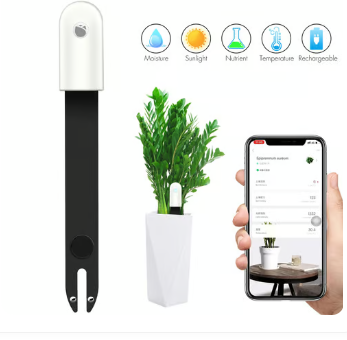
The Xiaomi Mi Flora sensor is an advanced gardening tool that monitors key soil metrics to help you optimize plant health. It measures soil moisture, temperature, light levels, and fertilizer content, providing comprehensive data to guide your gardening efforts. The sensor connects to your smartphone via Bluetooth, where it syncs with the Mi Home app. This app offers detailed insights and recommendations based on the data collected, helping you make informed decisions about watering, fertilizing, and plant placement. The sensor is easy to install and can be placed in the soil near any plant you wish to monitor. The Xiaomi Mi Flora is particularly useful for indoor gardening and potted plants, where maintaining optimal soil conditions can be challenging. It provides real-time alerts if any of the measured parameters fall outside ideal ranges, ensuring you can take prompt action to address any issues. The device is powered by a replaceable battery that lasts up to a year, minimizing maintenance. With its affordable price point and robust functionality, the Xiaomi Mi Flora is an excellent investment for both novice and experienced gardeners looking to enhance their plant care routines through data-driven insights.
3 Parrot Flower Power
Top Brands
Parrot, Xiaomi, VegTrug
Cost Tier
$30 - $60
Competing Products
Xiaomi Mi Flora, VegTrug Grow Care, Blumat Digital
Consumer Reviews
Positive feedback for detailed plant care insights and reliable data
Price Bracket
Budget to mid-range
Key Purpose
Tracks soil moisture, light, temperature, and fertilizer levels to aid plant care.
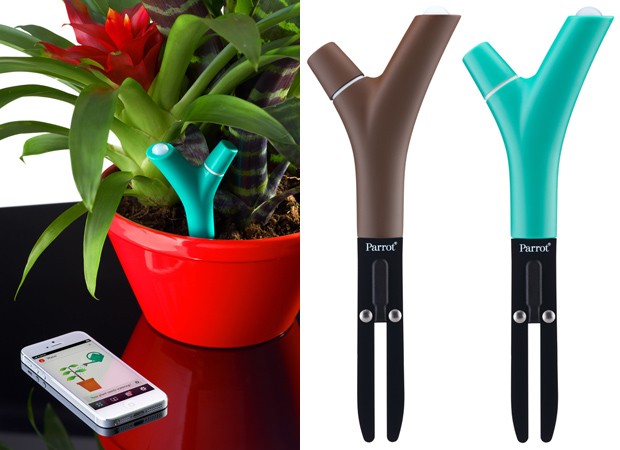
The Parrot Flower Power sensor is a versatile gardening gadget that provides detailed information about your plants' environmental conditions. It measures soil moisture, temperature, sunlight, and fertilizer levels, sending this data to your smartphone via Bluetooth. The Flower Power app then offers tailored advice based on the specific needs of your plants, helping you maintain optimal growing conditions. This sensor is particularly valuable for gardeners with a diverse array of plants, as it allows for customized care strategies for each species. The Parrot Flower Power is designed to be user-friendly, with a straightforward setup process and intuitive app interface. It supports over 7,000 plant species in its database, providing specific care instructions for each one. The sensor is also highly durable, designed to withstand outdoor conditions such as rain and extreme temperatures. By continuously monitoring critical soil and environmental parameters, Flower Power ensures that your plants receive the precise care they need to thrive. This leads to healthier plants, better yields, and more efficient use of resources, making it a smart choice for anyone serious about gardening.
4 Smart Planters
Click & Grow
Preferred Brands
Click & Grow, AeroGarden, Smart Garden
Price Range
$100 - $300
Competitors
AeroGarden, Smart Garden, Gardyn
User Ratings
High marks for convenience, ease of use, and plant growth results
Price Band
Mid to high-end
Main Function
Automated indoor gardening system with built-in lights and soil sensors.
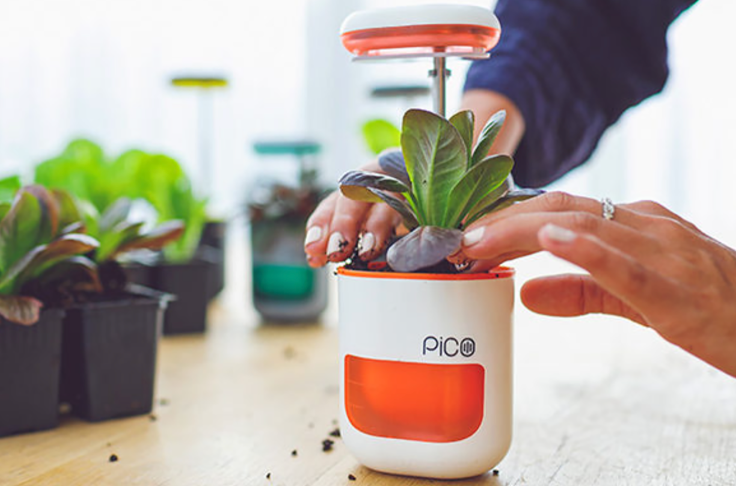
Click & Grow's smart planter systems are designed to simplify indoor gardening through automation and advanced technology. The system includes a self-watering planter equipped with an integrated LED grow light, creating an ideal environment for plant growth. Using specially formulated Smart Soil and plant pods, Click & Grow ensures your plants receive the necessary nutrients, water, and light without constant attention. The planter automatically waters the plants, delivering just the right amount of moisture, while the LED lights provide the optimal spectrum for photosynthesis. The Click & Grow system is particularly well-suited for growing herbs, small vegetables, and flowers indoors, making it perfect for urban dwellers or those with limited outdoor space. The convenience of this system lies in its low-maintenance design; users simply need to refill the water reservoir occasionally and replace the plant pods when necessary. The planter's sleek, modern design makes it a stylish addition to any home, while its functionality supports year-round gardening regardless of outdoor weather conditions. Click & Grow offers various models and sizes to fit different needs and spaces, providing a scalable solution for indoor gardeners of all levels.
5 Aero Garden
Leading Brands
Aero Garden, Click & Grow, Smart Garden
Investment Level
$150 - $400
Rival Products
Click & Grow, Smart Garden, Gardyn
Customer Reviews
Generally, very positive, known for fast plant growth and variety of seed pods available
Price Point
Mid to high-range
Primary Function
Indoor hydroponic gardening system with automatic lighting and watering.
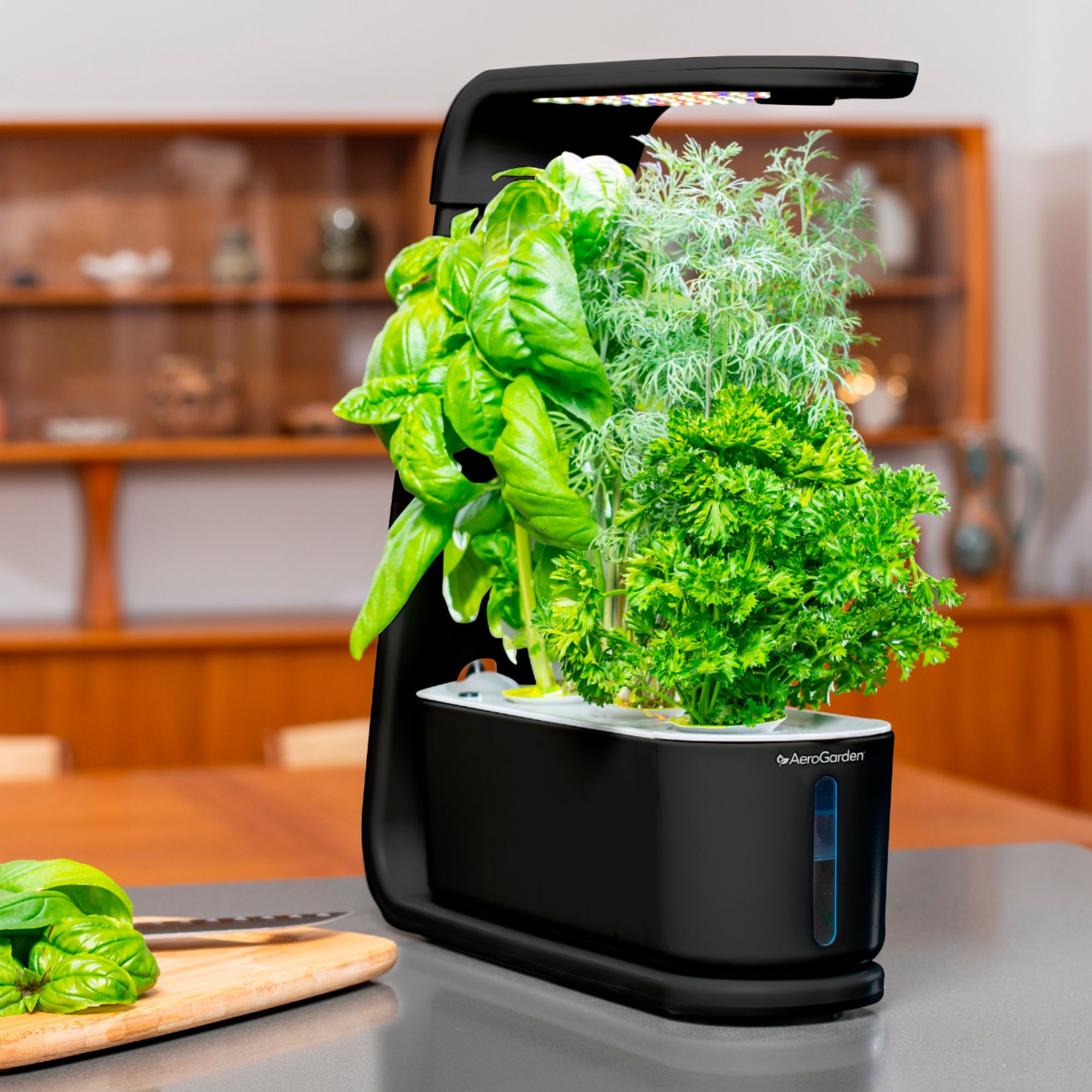
The AeroGarden is an advanced hydroponic indoor garden system that allows you to grow fresh herbs, vegetables, and flowers all year round. It uses a water-based growing medium and provides plants with optimal light through built-in LED grow lights. The AeroGarden is fully automated, adjusting light cycles and reminding you when to add water and plant food. This system creates a controlled environment that fosters faster growth compared to traditional soil-based gardening, often yielding harvests in just a few weeks.One of the key benefits of the AeroGarden is its versatility; it comes in various sizes, from compact models suitable for small kitchens to larger systems capable of supporting multiple plants. The device's touch screen or app-based controls provide easy management of your garden, including monitoring water levels and adjusting light settings. Aero Garden’s pre-seeded pods ensure that planting is straightforward and mess-free. This smart planter is ideal for anyone looking to enjoy fresh produce at home with minimal effort, making it an excellent choice for both beginner gardeners and experienced horticulturists seeking a reliable indoor growing solution.
6 Weather Stations
Netatmo Weather Station
Top Selections
Netatmo Weather Station, Netatmo Smart Rain Gauge, Netatmo Wind Gauge
Budget Range
$180 - $300
Competitive Alternatives
Ambient Weather, Davis Instruments, AcuRite
Feedback Overview
Users appreciate the sleek design, accuracy, and comprehensive data
Price Tier
Mid to high-end
Main Purpose
Provides detailed weather data including temperature, humidity, air quality, and more.
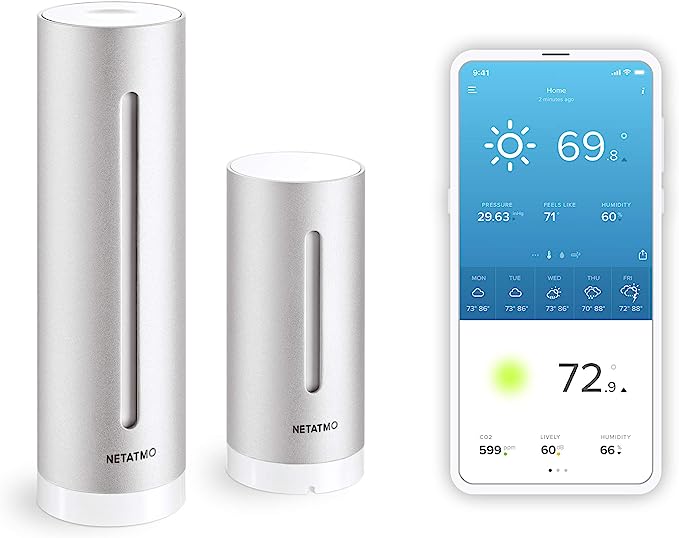
The Netatmo Weather Station provides detailed and accurate environmental data to help you manage your garden effectively. It includes indoor and outdoor modules that measure temperature, humidity, air quality, and CO2 levels. The outdoor module also tracks weather conditions such as rainfall and wind speed. This data is transmitted to your smartphone via Wi-Fi, allowing you to monitor your garden's microclimate in real-time and make informed decisions about watering, planting, and other gardening activities. The Netatmo Weather Station is particularly beneficial for gardeners who want to optimize their plants' growing conditions based on precise environmental data. It supports integration with other smart home systems, including Amazon Alexa, Apple HomeKit, and Google Assistant, enabling voice control and automation. For example, you can set up triggers to adjust your smart irrigation system based on the weather station's data. Additionally, the Netatmo Weather Station provides historical data and trends, helping you understand how weather patterns affect your garden over time. This comprehensive insight allows for more strategic planning and improved plant health.
7 Ambient Weather WS-2902C
Top Choices
Ambient Weather WS-2902C, Ambient Weather WS-2000, Ambient Weather WS-5000
Cost Range
$150 - $300
Competitors
Netatmo, Davis Instruments, AcuRite
User Ratings
High ratings for accuracy, comprehensive features, and value for money
Price Spectrum
Mid-range
Essential Function
Offers extensive weather monitoring capabilities, including wind speed, rainfall, UV, and solar radiation.
The Ambient Weather WS-2902C is a comprehensive weather station that offers a wide range of measurements crucial for effective garden management. It tracks temperature, humidity, barometric pressure, wind speed and direction, rainfall, UV, and solar radiation. The device's color LCD console provides a clear and detailed display of all collected data, which is also accessible via a smartphone app. This weather station can connect to online weather networks, allowing you to compare your data with other stations in your area and access broader weather insights. The WS-2902C is designed to be easy to install and use, with a wireless sensor array that transmits data up to 330 feet. This makes it ideal for monitoring conditions across large gardens or properties. By providing accurate and localized weather data, the Ambient Weather station helps you make more informed decisions about watering schedules, plant placement, and protection against extreme weather conditions. Its ability to integrate with smart home systems and garden gadgets further enhances its utility, making it a valuable tool for serious gardeners looking to optimize their growing environment.
8 Automated Lawn Mowers
Husqvarna Automower
Premier Picks
Husqvarna Automower 315 X, Automower 430X, Automower 450X
Price Scope
$1,500 - $3,500
Competing Brands
Worx Landroid, Robomow, Gardena
User Feedback
Highly rated for reliability, cutting performance, and smart features
Cost Bracket
High-end
Main Role
Autonomous lawn mowing with GPS navigation and smart connectivity.
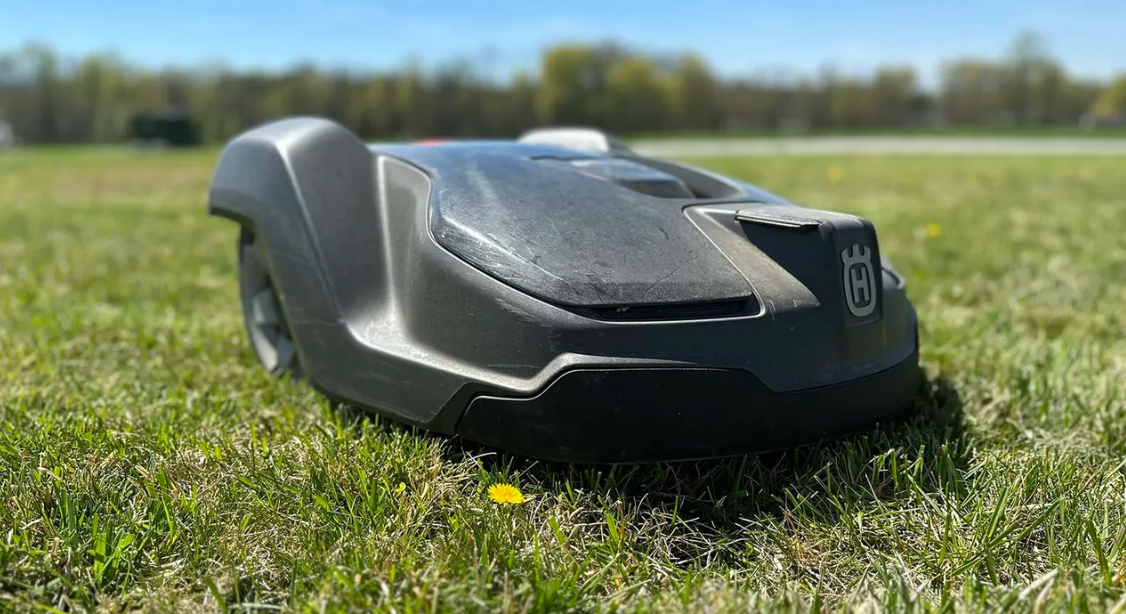
The Husqvarna Automower is a state-of-the-art robotic lawn mower designed to keep your lawn perfectly trimmed with minimal effort. It operates autonomously, navigating around obstacles and covering complex lawns with ease. The Automower uses a combination of sensors and GPS navigation to map your lawn and ensure even coverage. It can handle slopes up to 45%, making it suitable for a variety of terrains. The mower is also weather-resistant, allowing it to operate in different weather conditions, including rain.One of the key features of the Husqvarna Automower is its ability to operate quietly, producing significantly less noise than traditional mowers. This makes it an excellent choice for residential areas where noise pollution is a concern. The Automower can be controlled and scheduled via a smartphone app, allowing you to set mowing times and monitor its progress remotely. With its efficient and precise cutting system, the Husqvarna Automower promotes healthier grass growth by making frequent, small cuts, which helps maintain a lush and even lawn. This promotes healthier grass growth by making frequent, small cuts, which helps maintain a lush and even lawn. This consistent trimming not only enhances the aesthetic appeal of your yard but also improves the overall health of your grass by preventing thatch buildup and encouraging stronger root systems. Automower is also equipped with advanced safety features, including lift and tilt sensors that stop the blades immediately if the mower is picked up or tips over, ensuring safe operation around children and pets. It comes with a theft protection system, featuring an alarm and GPS tracking, to provide peace of mind. The initial setup includes boundary wires to define the mowing area, which the Automower learns and navigates efficiently. With options for various lawn sizes and complexities, the Husqvarna Automower is a versatile and reliable solution for maintaining a pristine lawn effortlessly.
9 Smart Greenhouse Controllers
Link4 iPonic
Top Brands
Link4, Titan Controls, Autopilot
Investment Spectrum
$500 - $1,500
Competitors
Titan Controls, Autopilot, Growlink.
User Insight Well-regarded for its advanced control over climate conditions and ease of integration
Price Bracket
Mid to high-end
Primary Role
Comprehensive environmental control for greenhouses, including temperature, humidity, and CO2 levels.
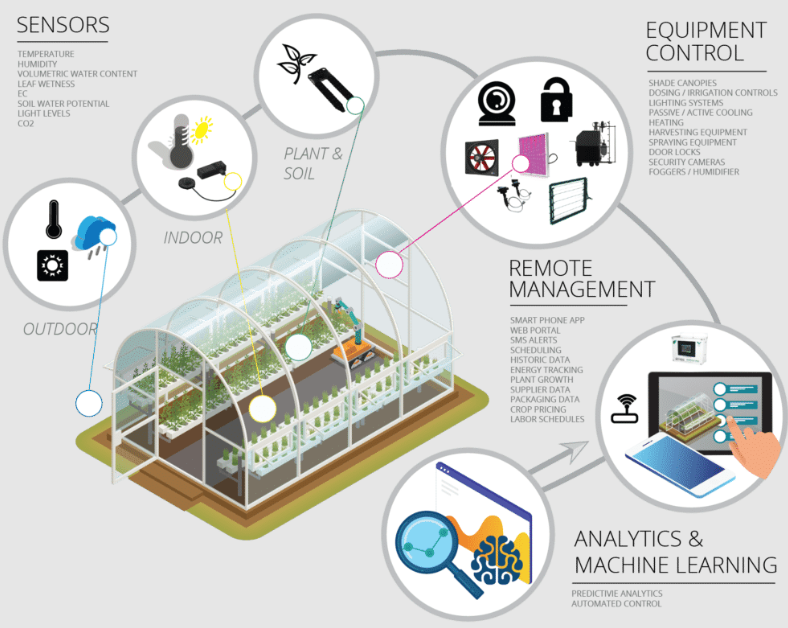
The Link4 iPonic is a sophisticated greenhouse controller that automates the climate control of your greenhouse, ensuring optimal growing conditions for your plants. This controller manages various environmental factors, including temperature, humidity, CO2 levels, lighting, and irrigation, all from a single interface. The iPonic system can be programmed with specific parameters tailored to different plant types, allowing for precise control over the growing environment. The Link4 iPonic stands out for its ability to integrate with multiple sensors and control systems, providing a comprehensive solution for greenhouse management. It features remote monitoring and control capabilities via a smartphone app, allowing you to adjust settings and receive real-time alerts from anywhere. This flexibility helps prevent issues such as overheating or inadequate humidity, which can significantly impact plant health and yield. The iPonic's data logging feature tracks environmental conditions over time, enabling you to analyze trends and optimize your greenhouse setup for maximum efficiency and productivity. By automating critical aspects of greenhouse management, the Link4 iPonic helps you achieve consistent, high-quality results with less manual intervention.
10 Garden Monitoring Cameras
Plant Link
Leading Brands
PlantLink, Parrot, Netatmo
Cost Spectrum
$50 - $100
Market Alternatives
Parrot Pot, Xiaomi Mi Flora, Edyn Garden Sensor
Review Highlights
Users appreciate the simplicity, effectiveness, and app integration
Price Category
Budget-friendly
Main Function
Monitors soil moisture and other conditions to help optimize plant care.
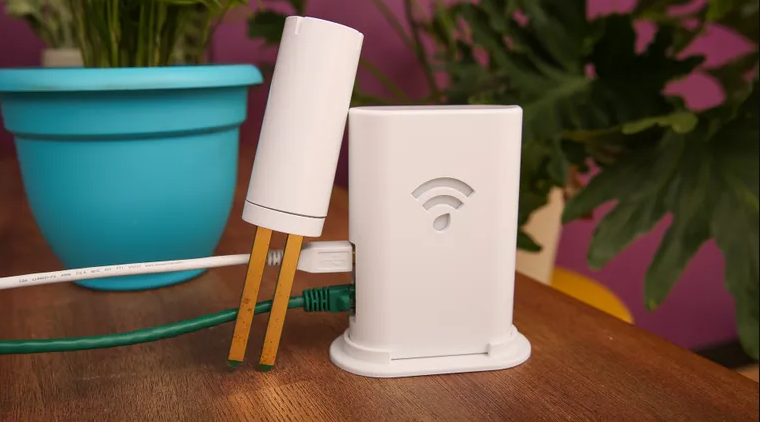
PlantLink is a garden monitoring system that uses cameras to provide live monitoring and time-lapse photography of your plants. This system helps you keep an eye on your garden remotely, allowing you to observe plant growth and identify any issues such as pest infestations or disease early on. The cameras are equipped with high-resolution imaging and can be accessed through a smartphone app, offering a detailed view of your garden's progress. The PlantLink system is particularly useful for large gardens or commercial operations where constant monitoring can be challenging. By providing visual data, PlantLink enables you to make timely interventions to protect and nurture your plants. Additionally, the system can be integrated with other smart garden devices, such as irrigation controllers and environmental sensors, to create a comprehensive garden management solution. With its ability to capture and analyze visual data, PlantLink helps you maintain a healthy and thriving garden with greater ease and efficiency.
11 Smart Garden Lights
Philips Hue Outdoor Lights
Preferred Choices
Philips Hue Lily, Hue Calla, Hue Econic
Budget Range
$80 - $250 per light
Competing Options
Ring Smart Lighting, LIFX, Kasa Smart
User Feedback
High ratings for versatility, color options, and integration with smart home systems
Price Band
Mid to high-end
Key Role
Provides customizable outdoor lighting with smart controls and energy efficiency.
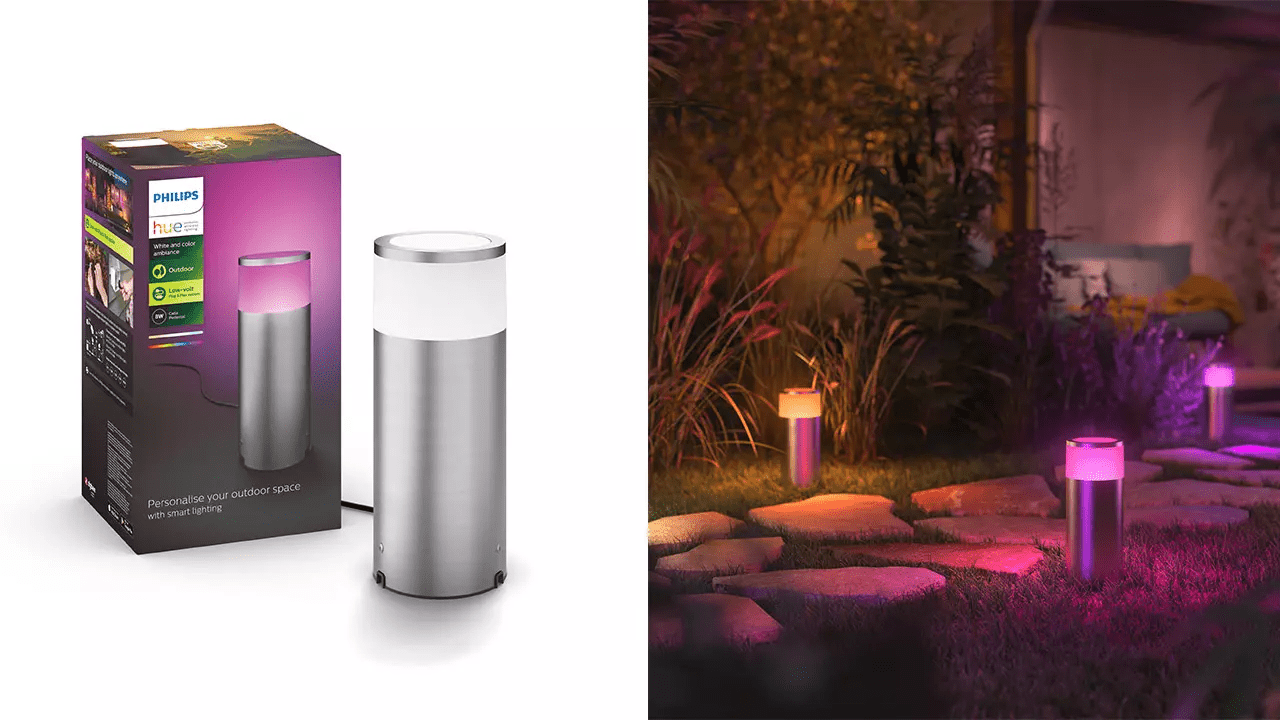
Philips Hue Outdoor Lights are smart lighting solutions designed to enhance both the aesthetic and functional aspects of your garden. These lights can be programmed to provide the ideal amount of illumination for your plants, supporting photosynthesis and growth cycles. They are also excellent for creating ambiance, with customizable colors and brightness levels that can be adjusted through a smartphone app or voice control via smart home systems like Amazon Alexa or Google Assistant. One of the key advantages of Philips Hue Outdoor Lights is their versatility and ease of use. You can set schedules for the lights to turn on and off automatically, ensuring your plants receive consistent lighting without manual intervention. The lights are weatherproof and durable, capable of withstanding various outdoor conditions. By integrating smart lighting into your garden, you can optimize plant growth and create a visually appealing outdoor space that is both functional and beautiful. Additionally, these lights can be synchronized with other smart devices, offering a seamless and integrated smart home experience.
12 Composters
NatureMill Plus XE
Top Selections
NatureMill Plus XE, Envirocycle, FoodCycler
Price Range
$300 - $400
Rival Products
Envirocycle, Food Cycler, Green Johanna
Review Overview
Positive reviews for efficiency, odor control, and ease of use
Cost Spectrum
Mid to high-end
Core Function
Automated composting of kitchen waste into usable compost with minimal effort.
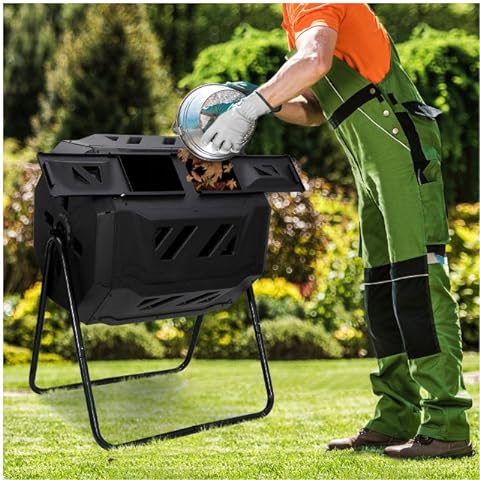
The NatureMill Plus XE is an automatic indoor composter that converts kitchen waste into nutrient-rich compost, which is perfect for enhancing your garden soil. This composter is designed to handle up to 120 pounds of waste per month, processing organic material through an automated mixing and aeration system. The composting process is efficient and odorless, thanks to a built-in air filter and heating element that accelerates decomposition. The NatureMill Plus XE is easy to use, with a simple loading mechanism and a drawer for collecting finished compost. It operates quietly and can be placed indoors, making it convenient for urban dwellers or those with limited outdoor space. By converting food scraps into valuable compost, this device helps reduce waste and provides an eco-friendly solution for enriching garden soil. The nutrient-rich compost produced by the Nature Mill enhances soil fertility, promotes healthy plant growth, and reduces the need for chemical fertilizers. With its compact design and efficient operation, the NatureMill Plus XE is a practical addition to any eco-conscious household.
13 Garden Assistants
Tertill
Premier Picks
Tertill, Kobi, Robomow
Investment Range
$300 - $400
Market Competitors
Kobi, Robomow, Gardena
User Ratings
Users generally find it effective for weeding and easy to use, though some note it can miss small weeds
Price Tier
Mid-range
Main Purpose
Solar-powered Garden weeding robot that autonomously removes weeds.

Tertill is a solar-powered weeding robot that autonomously patrols your garden, removing weeds without the need for chemicals or manual labor. Designed by one of the co-creators of the Roomba, Tertill uses sensors to navigate your garden and distinguish between weeds and desirable plants. It employs a small, rotating weed whacker to cut down weeds at the soil level, preventing them from regrowing.Tertill's solar-powered design means it operates continuously during daylight hours without the need for battery recharging or replacement. It is weather-resistant and built to withstand outdoor conditions, ensuring reliable performance throughout the growing season. By maintaining a weed-free garden, Tertill helps your plants receive more nutrients, water, and sunlight, promoting healthier growth. This robot is particularly useful for busy gardeners or those with physical limitations, offering a hands-free solution to one of the most labor-intensive aspects of gardening. With its innovative technology and sustainable design, Tertill represents a significant advancement in automated garden care.
Installation: Setting Up Your Smart Garden

Installing Soil Sensors
The first step in setting up a smart garden involves strategically placing soil sensors to monitor essential metrics such as moisture levels, soil pH, temperature, and nutrient content. For instance, placing sensors at a depth of 10-15 cm in various garden beds can provide accurate readings representative of plant root zones. Research shows that precise placement of sensors can improve water use efficiency by up to 30% (Source: USDA). This data is crucial for optimizing irrigation schedules and ensuring plants receive the right amount of water at the right time.
Setting Up Irrigation Systems
Integrating an irrigation system is critical for automating watering based on sensor data. Connecting drip irrigation lines or sprinklers to a central control unit synced with soil sensors enables responsive watering.Studies indicate that smart irrigation systems can reduce water usage by 40-60% compared to traditional methods (Source: EPA). Proper installation ensures efficient water distribution, promoting healthy plant growth while conserving resources. This setup also supports sustainable gardening practices by minimizing water wastage and reducing environmental impact.
Integration: Connecting Devices in Your Smart Garden
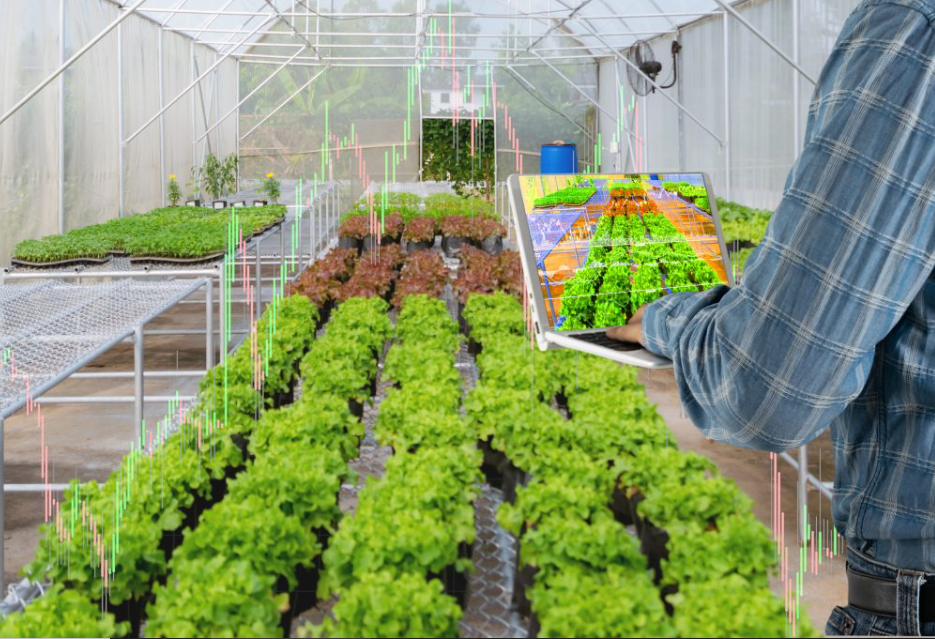
Connecting Devices with IFTTT
Integration through platforms like IFTTT allows seamless communication between smart devices. By creating applets that trigger actions based on sensor data, such as activating irrigation when soil moisture drops below a threshold, gardeners can enhance efficiency and productivity. Reports suggest that using automation in gardening can increase crop yields by 25-45% (Source: Purdue University). This integration optimizes plant care routines, reduces manual intervention, and improves overall garden management.
Utilizing Wireless Communication Protocols
Selecting devices that support wireless protocols such as Wi-Fi or Bluetooth facilitates easy connectivity and data exchange between sensors, irrigation systems, and other smart devices. Research highlights that using wireless technology can reduce installation costs by 20-30% and maintenance costs by 15-20% (Source: Frost & Sullivan). These technologies enable efficient management of resources and enhance scalability in smart gardening solutions.
Centralized Monitoring and Control
Smart garden platforms and mobile apps centralize data from sensors, providing real-time insights into environmental conditions and plant health. Monitoring remotely and receiving alerts about critical changes empower gardeners to make informed decisions and adjust settings promptly.Studies indicate that using smart monitoring systems can reduce plant loss by 50% (Source: University of California Agriculture and Natural Resources).This centralized approach maximizes productivity, ensures optimal plant growth, and supports sustainable gardening practices. In conclusion, integrating advanced technologies into gardening practices enhances efficiency, conserves resources, and improves plant health. By strategically installing soil sensors, setting up efficient irrigation systems, and leveraging integration technologies, gardeners can achieve higher yields, reduce environmental impact, and enjoy a more productive and sustainable smart garden experience.
Maintenance and Optimization

Regular Updates
Regular updates are essential to maintaining the optimal functionality and security of smart garden devices. Manufacturers frequently release firmware updates that address vulnerabilities, improve performance, and introduce new features. For instance, studies have shown that updating firmware can reduce the risk of cyber-attacks by addressing known security flaws. Additionally, updates often include enhancements that optimize energy consumption, extending the battery life of devices such as smart irrigation controllers and weather sensors. By staying current with updates, gardeners can ensure their smart garden systems operate efficiently and securely throughout the year. According to a study by Symantec, 60% of data breaches are due to unpatched vulnerabilities, underscoring the critical role of regular updates in maintaining security (Source: Symantec).Thus, regular updates contribute to the longevity of smart devices by addressing software bugs that could lead to operational issues over time. Firmware updates can also integrate compatibility with new smart home ecosystems or protocols, allowing gardeners to expand their smart garden setup with additional devices seamlessly. Therefore, establishing a routine for checking and installing firmware updates—whether through manual checks or automatic notifications—ensures that your smart garden remains reliable and capable of meeting your gardening needs effectively. Firmware updates can optimize energy consumption by up to 20%, significantly extending the battery life of smart garden devices like irrigation controllers and weather sensors (Source: Energy Star).
Data Analysis
Data analysis is a cornerstone of optimizing smart garden performance, providing insights into environmental conditions and plant health that drive informed decision-making. By utilizing sensors and IoT technologies, smart gardens capture data on soil moisture levels, ambient temperature, humidity, and sunlight exposure. Analyzing this data allows gardeners to understand trends and patterns, such as how different plant species respond to varying environmental factors. For example, data analysis can reveal that certain plants thrive with less water during specific seasons, guiding adjustments in irrigation schedules to conserve resources without compromising plant health. Data-driven irrigation systems can reduce water usage by up to 50% compared to traditional methods, by precisely adjusting watering schedules based on real-time soil moisture data (Source: Environmental Protection Agency).Furthermore, advancements in data analytics enable predictive modeling that anticipates future environmental conditions, empowering gardeners to preemptively adjust their care routines. Machine learning algorithms, for instance, can analyze historical data to recommend personalized watering schedules or identify early signs of pest infestations based on subtle changes in environmental metrics. This data-driven approach not only optimizes resource utilization but also promotes sustainable gardening practices that support ecosystem health. Therefore, leveraging data analysis capabilities within smart garden systems enhances efficiency, resilience, and overall yield, fostering a greener and more productive garden environment. Adoption of predictive analytics in smart agriculture can lead to a 25% increase in crop yield through optimized planting, watering, and fertilization schedules (Source: McKinsey & Company).
Seasonal Adjustments
Seasonal adjustments are critical for maintaining optimal plant care and maximizing yield in a smart garden setup. As weather patterns change throughout the year, plants' water and nutrient requirements fluctuate accordingly. Smart garden systems equipped with seasonal adjustment capabilities can automatically adapt irrigation schedules based on factors such as temperature, humidity, and daylight duration. For example, during hot summer months, smart irrigation controllers may increase watering frequency to compensate for higher evaporation rates and plant transpiration. Proper seasonal adjustments in lighting and nutrients can boost plant growth rates by up to 30%, ensuring healthier and more productive crops year-round (Source: University of California Agriculture and Natural Resources).Moreover, seasonal adjustments extend beyond irrigation to encompass other aspects of plant care, such as adjusting lighting schedules for indoor gardens or modifying fertilization regimens based on seasonal growth cycles. Research indicates that aligning gardening practices with seasonal changes can enhance plant resilience to environmental stressors and promote healthier growth. By leveraging smart technologies that facilitate real-time monitoring and adjustment, gardeners can optimize plant development throughout the year, ensuring consistent and robust harvests. Therefore, integrating seasonal adjustments into smart garden management strategies fosters sustainable gardening practices while maximizing the productivity and longevity of plant life.Smart garden systems can adapt irrigation schedules to match local weather conditions, reducing water waste and enhancing plant resilience in changing climates (Source: National Institute of Food and Agriculture).
Benefits of a Smart Garden
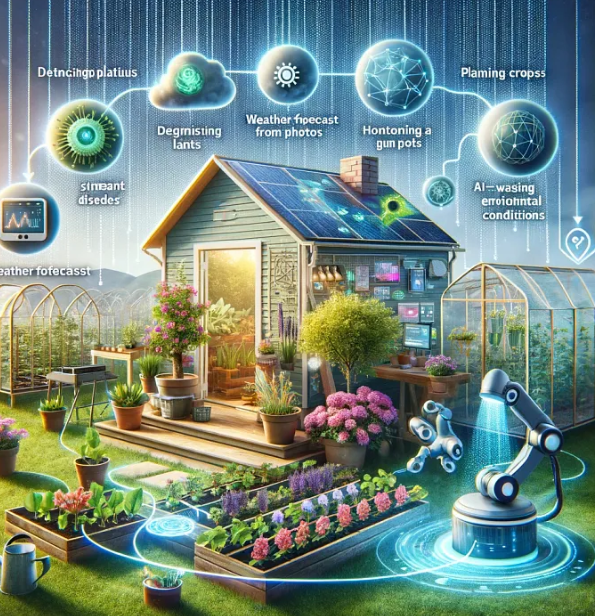
Efficiency
One of the most significant benefits of a smart garden is its ability to streamline and automate various gardening tasks, thereby enhancing overall efficiency. Smart technologies such as automated irrigation systems, robotic mowers, and sensor-based monitoring allow gardeners to save time and effort traditionally spent on manual labor. For example, automated irrigation systems adjust watering schedules based on real-time weather data and soil moisture levels, ensuring plants receive the right amount of water at the optimal times. Studies indicate that smart irrigation systems can reduce water usage by up to 50% compared to conventional methods by eliminating overwatering and minimizing runoff. Similarly, robotic mowers can maintain lawn health by cutting grass at precise intervals without human intervention. Overall, the efficiency gained from automating these tasks not only improves the aesthetics of the garden but also frees up valuable time for gardeners to focus on other aspects of plant care and enjoyment.
Resource Conservation
Smart garden technologies play a crucial role in conserving resources, particularly water. Traditional gardening practices often lead to water wastage through inefficient irrigation systems and overwatering. In contrast, smart irrigation systems utilize sensors and data analytics to tailor watering schedules to the specific needs of plants and soil conditions. By adjusting water delivery based on real-time weather forecasts and soil moisture levels, these systems can reduce water consumption significantly. Research suggests that smart irrigation systems can save 30% to 60% more water compared to traditional methods. Moreover, some smart gardens integrate rainwater harvesting systems, further reducing dependency on municipal water supplies. By conserving water resources effectively, smart gardens not only contribute to sustainable gardening practices but also help homeowners reduce water bills and minimize environmental impact.
Improved Plant Health
Smart gardening technologies contribute to improved plant health by enabling continuous monitoring and data-driven insights. Sensors embedded in the soil can monitor crucial parameters such as soil moisture levels, temperature, and nutrient content in real-time. This data is then analyzed to provide actionable recommendations, such as adjusting irrigation schedules or applying fertilizers precisely where needed. By ensuring that plants receive optimal conditions for growth, smart gardening practices reduce the risk of diseases and nutrient deficiencies, leading to healthier and more resilient plants. Research indicates that plants grown in environments with controlled conditions and personalized care are not only healthier but also more resistant to pests and diseases. Furthermore, early detection of potential issues allows gardeners to intervene promptly, preventing significant damage and maximizing plant productivity. Overall, improved plant health is a significant benefit of smart gardening, enabling gardeners to achieve better results with less effort and resource usage.
Convenience
The convenience offered by smart gardening technologies revolutionizes how gardeners manage and maintain their gardens. Through smartphone apps and web interfaces, gardeners can remotely monitor and control various aspects of their gardens, such as irrigation, lighting, and climate conditions. For instance, during vacations or busy periods, users can adjust watering schedules or receive alerts about plant health status without being physically present. This level of control not only saves time but also ensures that garden maintenance tasks are performed efficiently and effectively. Some smart gardening systems even offer personalized recommendations based on historical data and plant-specific requirements, simplifying decision-making for gardeners. Overall, the convenience provided by smart gardening technologies enhances flexibility and ease of use, allowing gardeners to enjoy their gardens more while achieving optimal results in plant care and maintenance.
Closing Remarks
With automated irrigation systems ensuring plants get just the right amount of water, and soil sensors providing instant updates on soil health, gardening becomes a joy rather than a chore. These gadgets not only save time and water but also boost plant growth by creating optimal growing conditions. They're not just tools; they're partners in creating a greener, healthier outdoor space. Creating a smart garden isn't just about convenience—it's about creating a space that enhances your life and supports sustainability. By investing in these technologies, you're not only making gardening easier but also contributing to an eco-friendlier lifestyle.
Faqs
What is a smart garden?
What essential gadgets do I need for a smart garden?
How do I set up a smart irrigation system?
How do soil moisture sensors work?
Can I control my smart garden remotely?
How can a weather station benefit my smart garden?
What are the advantages of using smart grow lights?
How do smart plant pots work?
Leave a Comment

